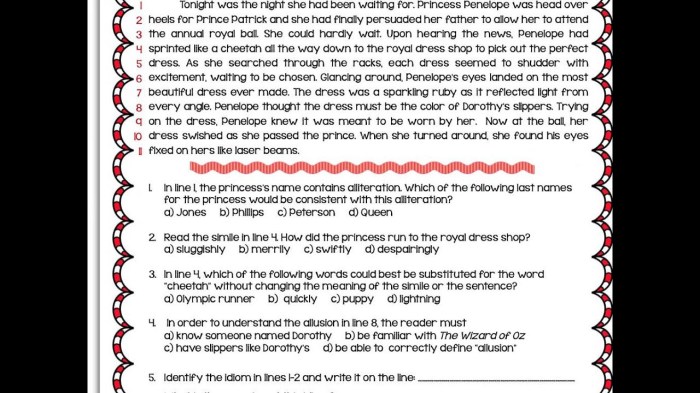Essay prompts for to kill a mockingbird – Essay prompts for “To Kill a Mockingbird” offer a rich tapestry of literary exploration, inviting readers to delve into the novel’s profound themes, unforgettable characters, and historical context.
From analyzing the novel’s exploration of prejudice, justice, and innocence to examining the character development of Atticus Finch and the use of symbolism, these prompts provide a framework for critical analysis and insightful discussion.
Themes in To Kill a Mockingbird
Harper Lee’s classic novel, “To Kill a Mockingbird,” explores profound themes that resonate with readers of all ages. These themes include prejudice, justice, and the loss of innocence.
Prejudice, a central theme in the novel, is portrayed through the trial of Tom Robinson, a black man falsely accused of raping a white woman. The jury’s decision to convict Robinson, despite overwhelming evidence of his innocence, exposes the deep-rooted prejudice and racism prevalent in Maycomb.
Justice is another crucial theme. The novel questions the fairness and equality of the justice system, particularly for marginalized groups. Through Atticus Finch’s defense of Robinson, Lee challenges the prevailing social norms and demands a more just society.
The loss of innocence is a significant theme that unfolds as the young protagonist, Scout Finch, witnesses the harsh realities of life. The novel depicts how children’s innocence is shattered by the injustices and cruelties of the adult world.
Character Analysis of Atticus Finch
Atticus Finch, the protagonist of “To Kill a Mockingbird,” is a complex and admirable character. He is a widowed lawyer who raises his two children, Scout and Jem, with integrity, compassion, and a strong moral compass.
Atticus’s actions and decisions contribute significantly to the plot. His unwavering belief in justice leads him to defend Tom Robinson, an unpopular decision that puts his family in danger. Through Atticus’s example, Lee demonstrates the importance of standing up for what is right, even in the face of adversity.
Atticus’s character has a profound impact on the other characters in the novel. His wisdom and guidance shape Scout’s and Jem’s moral development, teaching them the values of empathy, courage, and tolerance.
Symbolism in To Kill a Mockingbird
Harper Lee employs powerful symbolism in “To Kill a Mockingbird” to enhance the novel’s themes and characters.
The mockingbird symbolizes innocence and vulnerability. Its killing by Bob Ewell represents the destruction of innocence and justice.
The Boo Radley house represents mystery and fear. Its dark, isolated exterior reflects Boo’s own isolation from society, while its interior reveals his kindness and compassion.
The courthouse symbolizes the flawed justice system. Its imposing facade and unequal treatment of Tom Robinson highlight the systemic racism and injustice prevalent in Maycomb.
Historical Context of To Kill a Mockingbird
“To Kill a Mockingbird” is set during the Jim Crow era in the American South. The novel reflects the social and racial tensions of its time.
The Jim Crow laws, which enforced racial segregation, are depicted in the novel through the separate seating arrangements in the courtroom and the white jury’s biased verdict against Tom Robinson.
The novel also alludes to the emerging Civil Rights Movement, with characters like Atticus Finch representing those who challenged the prevailing social norms and fought for equality.
Literary Devices in To Kill a Mockingbird
Harper Lee employs various literary devices in “To Kill a Mockingbird” to enhance the novel’s impact.
Foreshadowing is used to create suspense and hint at future events. For example, the novel’s opening line foreshadows the tragic death of Boo Radley.
Irony is used to highlight the contradictions and absurdities of society. The most striking example is the trial of Tom Robinson, where overwhelming evidence of his innocence is dismissed.
Allegory is used to create a deeper meaning beyond the surface story. The novel’s exploration of prejudice and justice can be seen as an allegory for the broader social issues of the time.
FAQ Explained: Essay Prompts For To Kill A Mockingbird
What are the major themes explored in “To Kill a Mockingbird”?
The novel explores themes of prejudice, justice, innocence, and the loss of innocence.
How does the character of Atticus Finch contribute to the development of the plot?
Atticus’s actions and decisions shape the plot by highlighting the complexities of racial injustice and the importance of moral integrity.
What is the significance of the mockingbird as a symbol in the novel?
The mockingbird symbolizes innocence, vulnerability, and the destruction of innocence in a prejudiced society.
